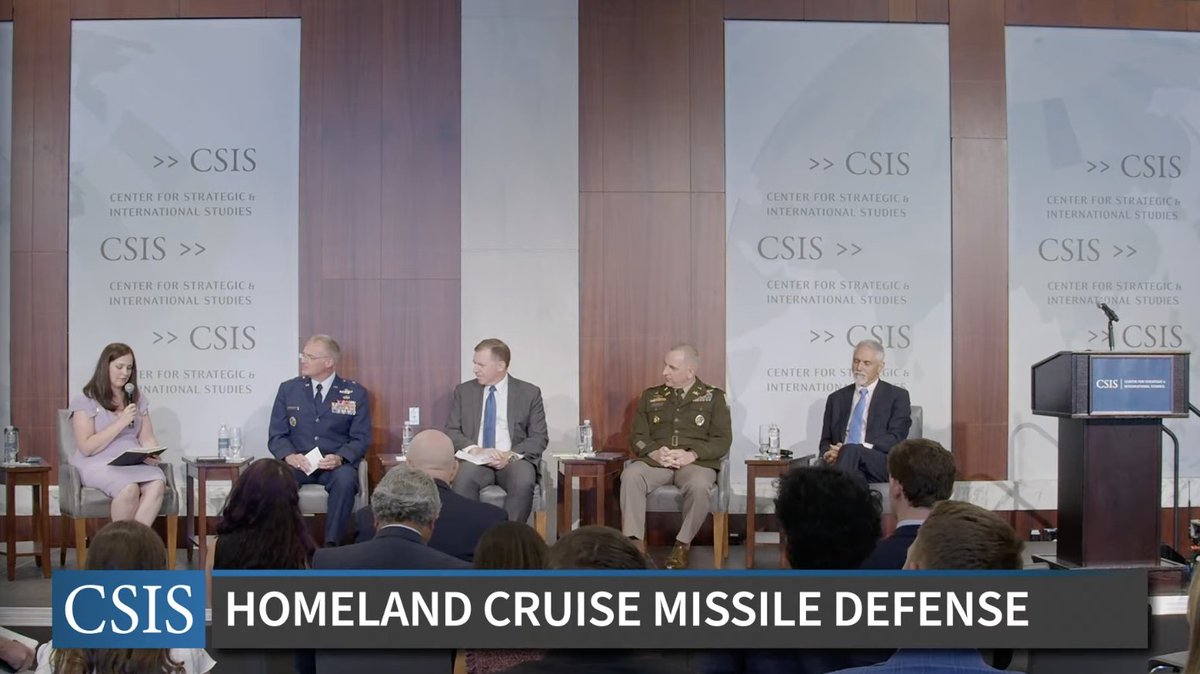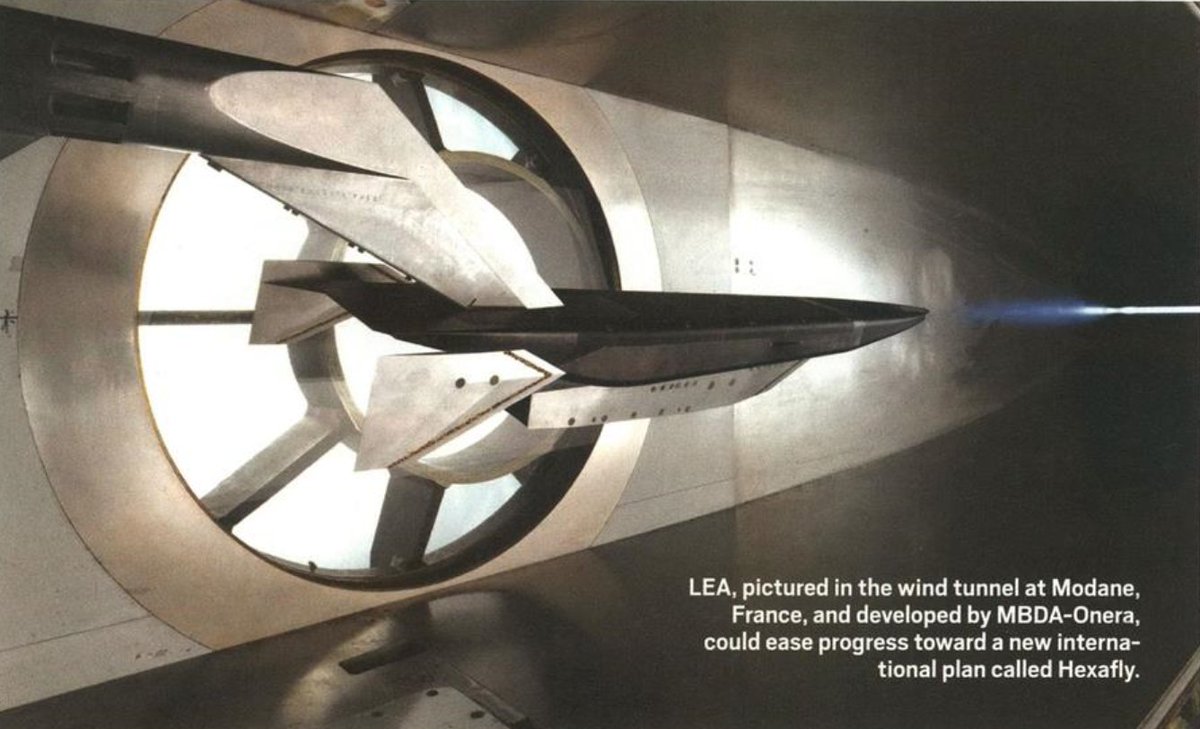And we're live on hypersonic defense! Livetweet 🧵 starts here. Watch the event, ask questions, and download the report here:
csis.org/events/complex…
csis.org/events/complex…

@tomkarako starts us off talking about the hypersonic threat. Space sensors are "the single most important program element" for a hypersonic defense. 

On to discussion of a glide-phase interceptor. Emphasis on flexible or modular payloads. Hypersonic weapons are vulnerable to different kill modalities. 

Karako: it's important to start with the physics of an engagement. New area-wide effects possible against hypersonic missiles. 

We don't compete with unlimited resources. But hypersonic threat is paradigmatic of most emerging missile threats: lower, more maneuverable, faster. The adaptations needed for hypersonic defense are the adaptations needed for missile defense writ large. 

On to Kelley Sayler, CRS analyst: Russia and China have fielded operational hypersonic weapons starting in 2019 - 2020 timeframe. Hypersonic weapons and ballistic missiles travel at similar speeds, but hypersonic weapons fly lower and can maneuver. This is a tough combination. 

Sayler: Hypersonic weapons "can underfly the detection capabilities" of ground based radar. And hypersonic weapons too dim to track with legacy space sensors. 

Joint Hypersonics Transition Office head Gillian Bussey: "It's great to be doing this from an actual place instead of in my home office." Hypersonic weapons operate in the near-space regime: 20 - 60km. Chinese view the near-space regime as a separate warfighting domain. 

Bussey: Chinese military thinkers publish papers and have thematic reports on dominating near-space regime, where hypersonic weapons operate. They've been thinking deeply about this as a domain, not just an extension of air or space warfighting. 

Bussey: Terminal defense isn't sufficient; we need a layered defense because there are too many targets. Intercept hypersonic weapons earlier, where "maneuvers come at a cost to range, they come at a cost of survivability, and are typically less stressful in the glide." 

Bussey: JHTO's research: hypersonic interceptor sensor windows; survival, characterization of sensors. Prediction of vehicle characteristics, thermal protection and heat shield materials, fuzing and blast-frag warheads, solid DACS, combined aero & DACS control, etc.
Bussey: research into interceptors "having enough maneuverability to get that three-to-one [maneuverability] overmatch" against a hypersonic weapon 

Bussey: "the fundamental aero remains the same" between offensive hypersonic strike weapon and possible interceptor. Lots of research in offensive strike which can be leveraged for defense. Cost can be amortized across multiple missions.
Bussey: JHTO and MDA working together to characterize effects of directed energy on hypersonic weapons.
MDA Chief Architect Stan Stafira: "as you engage in the glide phase, it makes the terminal defense that much easier." MDA architecture focused on layered defense, space IR sensors. 

NDIA ETI head Mark Lewis: A rule of thumb: a hypersonic weapon is traveling "at *least* a mile a second." Competitors are investing in hypersonic weapons, because they realize the cost-benefit is clear. 

Lewis: "Hypersonics isn't just one thing. Hypersonic is an adjective and applies to a wide range of systems." Moreover,"It's really the tactical systems that I worry about most...imagine a hypersonic missile swarm that could sink an aircraft carrier." 

Lewis: the Chinese FOBS/hypersonic test this summer got a lot of attention, but our eye really should be on the tactical-range, theater hypersonic weapons that threaten forward-located U.S. forces. The tests: "look at my right hand while I do something else with the left" 

@TheDEWLine starts Q&A. 

Stafira: "you're not gonna have a silver bullet and say this one thing is going to solve all your problems."
Bussey: Report is effective in categorizing hypersonic weapons & situating them in the broader threat picutre. Calls back to her time in IC: "[in the intelligence community] we got ourselves wrapped around the axle so many times on how to bin things." 

Karako: Praises Lewis' 2016 National Academies report's clarity: So many times I find myself standing athwart jargon yelling "stop." Definitions important, and missile threat "fundamentally a spectrum" on which hypersonic weapons sit. 

Stafira: "We have the capability to engage things in the thick atmosphere. we have the capability to engage things in space. but the near-space is this in-between layer [our defenses need to contend with]" 

Bussey: "I can imagine eventually a scramjet-powered interceptor." The HyFly was originally designed as a missile defense interceptor." 

Bussey: We used to mostly focus on hypersonic glide vehicles, but hypersonic cruise missiles "fly in the deeper atmosphere" she's glad to see them get more attention in recent plans.
On to questions, first from @ACapaccio on hypersonic weapon testing. Bussey: "we have capacity and throughput issues" for testing. Lewis: "our test infrastructure is frankly right now inadequate...and it's inadequate across the board."
Lewis: For the past few years "we were shutting down wind tunnels at the same rate [china] was building them." Lewis says people told to wait 4 months for a slot in the wind tunnel. Bussey corrects him: "more like 2 years." 

@tomkarako on the confusion on North Korea's "hypersonic" missile naming. "I think these guys are trolling us." There's lots and lots of less-predictable, ballistic, quasi ballistic, etc missiles. But they're on a spectrum; look past the fixation/confusion on "hypersonic" label. 

Bussey on hypersonic industrial base: thermal protection system supply chain for glide vehicles, additive manufacturing tech for hypersonic cruise missiles "are the long poles in the tent." By resolving those, hopes to double, triple, quadruple production. 

@TheDEWLine: can we expect to see a SciFire [US-AUS hypersonic research collab]-like thing on the defensive side?" Bussey: Use of test ranges will be critical. Karako: cooperation w/ allies should be a policy focus, and will emerge from collabs on offensive systems. 

Karako: Figure out "how can we monkey with the delicate flow problems that are happening [to hypersonic weapons] at high speeds." This is an opportunity to impose costs on the bad guys with as many different options as possible. Stafira: We're looking at all possible options. 



Bussey: Defenses are going to be costly, so it's worth looking at many kill modalities. Lots of outstanding questions that need answering. Interest in dust defense as "it has the potential to be asymmetric" in terms of cost.
Mark Lewis closes out the event on the value of hypersonic defense: The most costly thing of all is for U.S. bases and ships to be destroyed by hypersonic weapons.
• • •
Missing some Tweet in this thread? You can try to
force a refresh






















